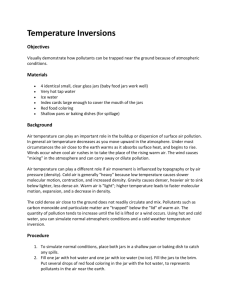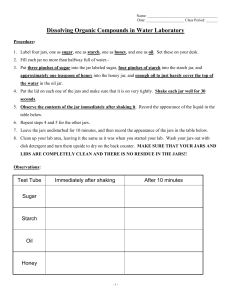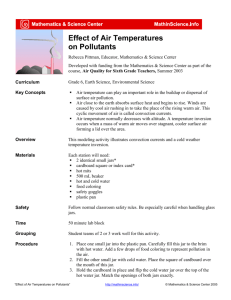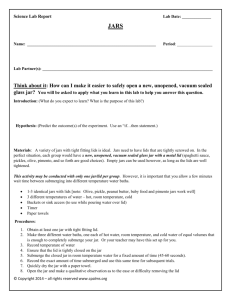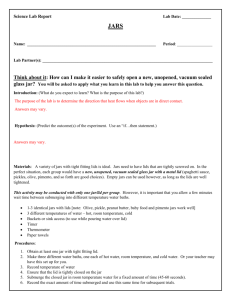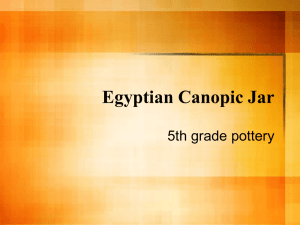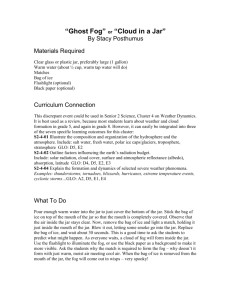Cloud in a Bottle
advertisement
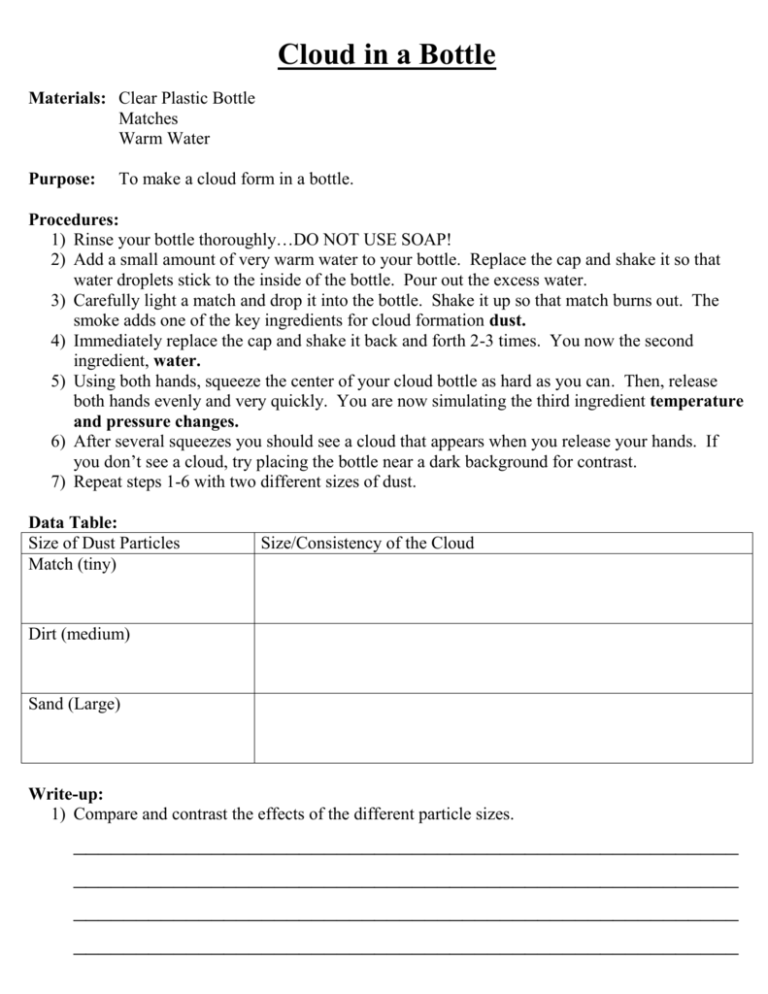
Cloud in a Bottle Materials: Clear Plastic Bottle Matches Warm Water Purpose: To make a cloud form in a bottle. Procedures: 1) Rinse your bottle thoroughly…DO NOT USE SOAP! 2) Add a small amount of very warm water to your bottle. Replace the cap and shake it so that water droplets stick to the inside of the bottle. Pour out the excess water. 3) Carefully light a match and drop it into the bottle. Shake it up so that match burns out. The smoke adds one of the key ingredients for cloud formation dust. 4) Immediately replace the cap and shake it back and forth 2-3 times. You now the second ingredient, water. 5) Using both hands, squeeze the center of your cloud bottle as hard as you can. Then, release both hands evenly and very quickly. You are now simulating the third ingredient temperature and pressure changes. 6) After several squeezes you should see a cloud that appears when you release your hands. If you don’t see a cloud, try placing the bottle near a dark background for contrast. 7) Repeat steps 1-6 with two different sizes of dust. Data Table: Size of Dust Particles Match (tiny) Size/Consistency of the Cloud Dirt (medium) Sand (Large) Write-up: 1) Compare and contrast the effects of the different particle sizes. _____________________________________________________ _____________________________________________________ _____________________________________________________ _____________________________________________________ 2) What are the key ingredients for making a cloud? _____________________________________________________ _____________________________________________________ _____________________________________________________ _____________________________________________________ 3) Predict what effect using a bicycle pump to change the pressure in the bottle would have on cloud consistency. _____________________________________________________ _____________________________________________________ _____________________________________________________ _____________________________________________________ Weather Front Materials: 2 Identical Baby Food Jars Plastic Coated 3x5 card Blue/red food coloring Water Measuring cups with pour spouts Spoon Paper Towels Purpose: To examine how the meeting of a warm and cold air mass. To see the lack of mixing that occurs when masses meet in a location on earth. The meeting of air masses will often cause severe storms as the two air parcels class in a location known as a front. You will see the ways in which frontal boundaries are formed between two different air masses. Procedures: 1) Fill one measuring cup with warm water (from the tap is fine) and add a few drops of red food coloring so the water is dark enough to clearly see the color. DO NOT make the water so dark that it is almost black! 2) Fill the second measuring cup with cold water from a faucet and add a few drops of blue food coloring 3) Stir each mixture evenly to disperse the coloring. 4) Cover the table top with paper towels. 5) Inspect the top of each baby food jar for cracks or chips. Place one jar upside down on the other to ensure that they are an exact match. If the jars do not meet exactly, you will end up with water everywhere. 6) Once both jars are inspected, fill the first jar with cold water until it is almost overflowing. Fill the second jar with warm water until it is almost overflowing. Make sure your warm water jar is easy to touch and not too hot. 7) Place the index card on top of the warm water jar and press down around the edges of the jar to make a seal. Keeping your hand flat on the card, slowly turn over the jar until it is upside down. DO NOT REMOVE YOUR HAND! Some spilling is normal, but be careful!!! 8) Move the warm water jar over the top of the cold water jar so that the edges meet up. The paper will act as a boundary between the layers. 9) Slowly remove the paper once the jars are stacked on each other. Pull gently while keeping your hands on the two jars. Once the paper is fully removed, you will have a front. Record what you see. 10) Very carefully, OVER THE TUB PROVIDED, lift the two jars and slowly turn the jars to one side while holding the center together. Remember the jars are not sealed in any way. You must hold them together carefully. Record what you see. Observations: Stationary Jars Sideways Jars Write-up: 1) From your observations, why might these fronts cause such severe storms? _____________________________________________________ _____________________________________________________ _____________________________________________________

